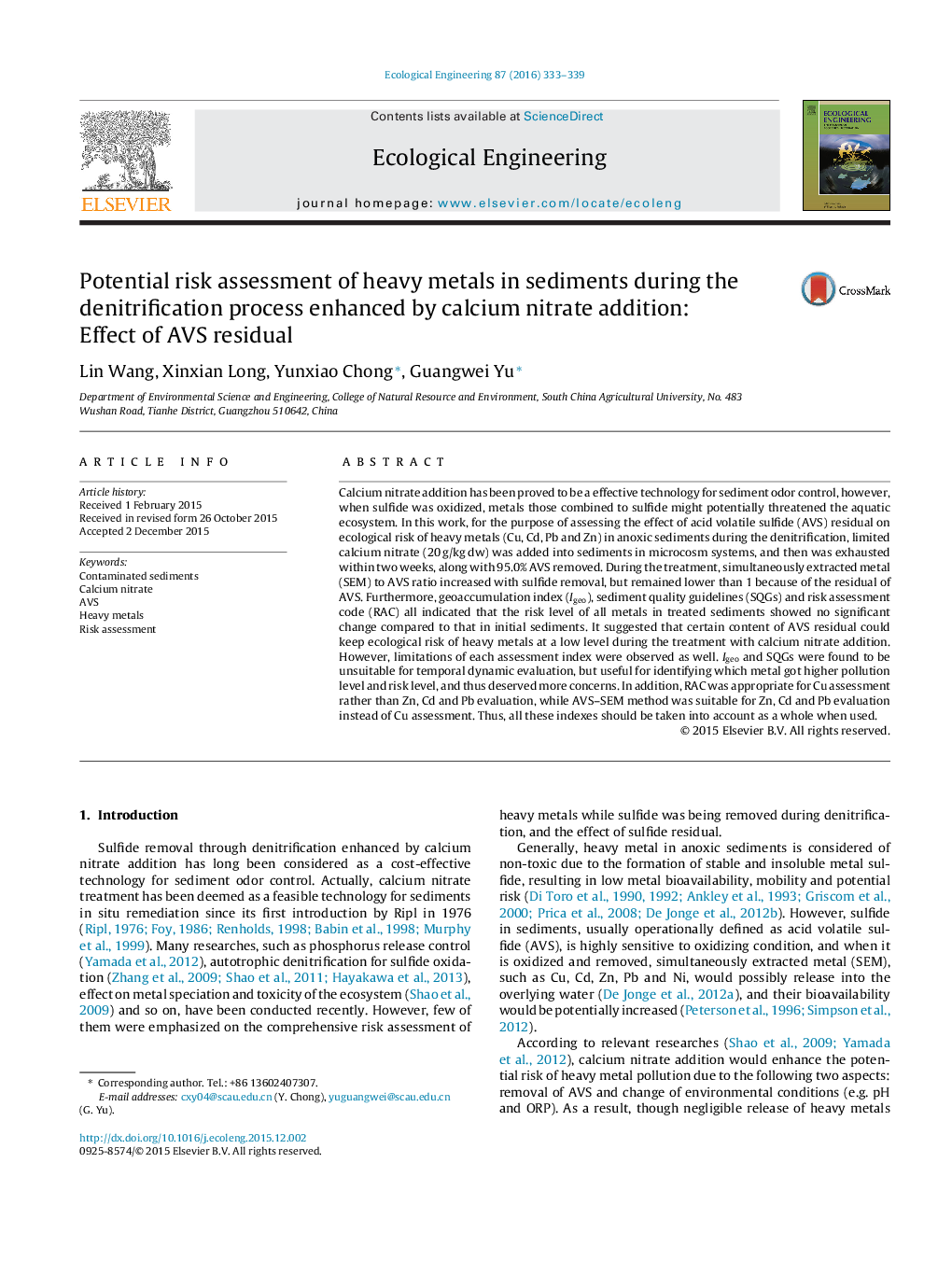| Article ID | Journal | Published Year | Pages | File Type |
|---|---|---|---|---|
| 6301526 | Ecological Engineering | 2016 | 7 Pages |
Abstract
Calcium nitrate addition has been proved to be a effective technology for sediment odor control, however, when sulfide was oxidized, metals those combined to sulfide might potentially threatened the aquatic ecosystem. In this work, for the purpose of assessing the effect of acid volatile sulfide (AVS) residual on ecological risk of heavy metals (Cu, Cd, Pb and Zn) in anoxic sediments during the denitrification, limited calcium nitrate (20 g/kg dw) was added into sediments in microcosm systems, and then was exhausted within two weeks, along with 95.0% AVS removed. During the treatment, simultaneously extracted metal (SEM) to AVS ratio increased with sulfide removal, but remained lower than 1 because of the residual of AVS. Furthermore, geoaccumulation index (Igeo), sediment quality guidelines (SQGs) and risk assessment code (RAC) all indicated that the risk level of all metals in treated sediments showed no significant change compared to that in initial sediments. It suggested that certain content of AVS residual could keep ecological risk of heavy metals at a low level during the treatment with calcium nitrate addition. However, limitations of each assessment index were observed as well. Igeo and SQGs were found to be unsuitable for temporal dynamic evaluation, but useful for identifying which metal got higher pollution level and risk level, and thus deserved more concerns. In addition, RAC was appropriate for Cu assessment rather than Zn, Cd and Pb evaluation, while AVS-SEM method was suitable for Zn, Cd and Pb evaluation instead of Cu assessment. Thus, all these indexes should be taken into account as a whole when used.
Related Topics
Life Sciences
Agricultural and Biological Sciences
Ecology, Evolution, Behavior and Systematics
Authors
Lin Wang, Xinxian Long, Yunxiao Chong, Guangwei Yu,
